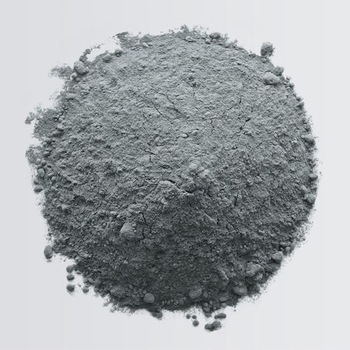PRODUCT DETAIL
- Home / Product
- Higher ultimate strength
- Improved workability
- Reduced heat of hydration
- Reduced permeability
- Increased resistance to sulfate attack
- Increased resistance to alkali-silica reactivity (ASR)
- Lowered costs
- Reduced shrinkage
- Increased durability
Fly Ash
Fly ash is used in concrete admixtures to enhance the performance of concrete. Portland cement contains about 65 percent lime. Some of this lime becomes free and available during the hydration process. When fly ash is present with free lime, it reacts chemically to form additional cementitious materials, improving many of the properties of the concrete.
Benefits:
Many benefits of incorporating fly ash into a PCC have been demonstrated through extensive research and countless highway and bridge construction projects. Benefits to concrete vary depending on the type of fly ash, a proportion used, other mix ingredients, mixing procedure, field conditions, and placement.
Some of the benefits of fly ash in concrete:
Quality of Fly Ash
Quality requirements for fly ash vary depending on the intended use. Fly ash quality is affected by fuel characteristics (coal), co-firing of fuels (bituminous and sub-bituminous coals), and various aspects of the combustion and flue gas cleaning/collection processes. The four most relevant characteristics of fly ash for use in concrete are loss on ignition (LOI), fineness, chemical composition and uniformity.
LOI is a measurement of unburned carbon (coal) remaining in the ash and is a critical characteristic of fly ash, especially for concrete applications. High carbon levels, the type of carbon (i.e., activated), the interaction of soluble ions in fly ash, and the variability of carbon content can result in significant air-entrainment problems in fresh concrete and can adversely affect the durability of concrete. AASHTO and ASTM specify limits for LOI. However, some state transportation departments will specify a lower level for LOI. Carbon can also be removed from fly ash.
Some fly ash uses are not affected by the LOI. Filler in asphalt, flowable fill, and structural fills can accept fly ash with elevated carbon contents.
Fineness of fly ash is most closely related to the operating condition of the coal crushers and the grindability of the coal itself. For fly ash use in concrete applications, fineness is defined as the percent by weight of the material retained on the 0.044 mm (No. 325) sieve. A coarser gradation can result in a less reactive ash and could contain higher carbon contents. Limits on fineness are addressed by ASTM and state transportation department specifications. Fly ash can be processed by screening or air classification to improve its fineness and reactivity.
Some non-concrete applications, such as structural fills are not affected by fly ash fineness. However, other applications such as asphalt filler, are greatly dependent on the fly ash fineness and its particle size distribution.
Chemical composition of fly ash relates directly to the mineral chemistry of the parent coal and any additional fuels or additives used in the combustion or post-combustion processes. The pollution control technology that is used can also affect the chemical composition of the fly ash. Electric generating stations burn large volumes of coal from multiple sources. Coals may be blended to maximize generation efficiency or to improve the station environmental performance. The chemistry of the fly ash is constantly tested and evaluated for specific use applications.
Some stations selectively burn specific coals or modify their additives formulation to avoid degrading the ash quality or to impart a desired fly ash chemistry and characteristics.
Uniformity of fly ash characteristics from shipment to shipment is imperative in order to supply a consistent product. Fly ash chemistry and characteristics are typically known in advance so concrete mixes are designed and tested for performance.
